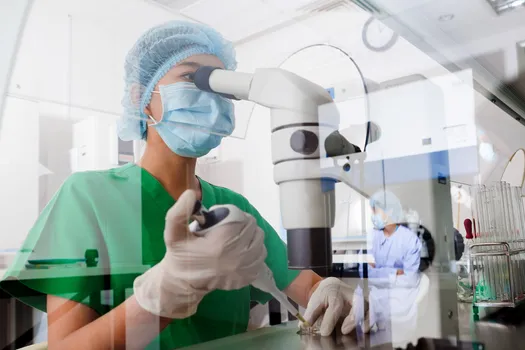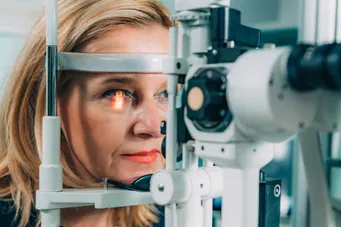By Andrew Stewart, MD, as told to Hallie Levine
Type 2 diabetes is one of the world’s greatest health problems. It affects about 400 million people globally. If it’s uncontrolled, it can lead to dangerous complications like kidney failure, blindness, heart attack, and stroke. But while there are over 30 different drugs on the market to help manage this disease and prevent these problems, none provide an actual cure.
One reason is that until recently, we didn’t quite understand the full scope of the problem. Two decades ago, if you asked a diabetes specialist to explain the cause of type 2 diabetes, they would say insulin resistance. Insulin is a hormone made by the pancreas that helps the glucose in your blood enter cells in your muscle, fat, and liver, where it’s used for energy. But when you have insulin resistance, these muscle, fat, and liver cells don’t respond well to it. As a result, your pancreas has to make more and more insulin to compensate. Over time, this can lead to type 2 diabetes.
New Information
Now, we know that part of the problem also lies with your beta cells. These are the cells in your pancreas that actually produce the insulin. Our bodies make most of our beta cells within the first few years of our life. But some people make more than others. As a result, if they start to develop insulin resistance later in life, their bodies still have enough beta cells to keep up insulin production. But if they don’t, the beta cells they do have work too hard and eventually die. These are the people who end up with type 2 diabetes.
Here at Mount Sinai, our goal is to find drugs that can regenerate these insulin-producing beta cells. If you do that, then it would be possible to actually cure type 2 diabetes. Back in 2015, we identified a drug that may do just that, called harmine. This drug, which occurs naturally in a number of plants around the world, blocks an enzyme in the beta cells called DYRK1A. When you do this, it causes beta cells to multiply. Our study found that harmine treatment actually tripled the number of beta cells in diabetic mice. This in turn restored their blood sugar levels to normal.
Continued
A Working Combination
While that’s huge news, we still knew that this approach wouldn’t be enough to see similar results in humans. We decided to try to combine harmine with another class of type 2 diabetes drugs, known as GLP1R agonists (some examples are exenatide, liraglutide, and lixisenatide). These medicines actually target a specific protein found on beta cells that encourages them to produce insulin.
We took beta cells from normal people and people with type 2 diabetes. We put some in tissue culture dishes, and we transplanted the rest into mice. When we combined harmine with any of the GLP1R agonist drugs currently on the market for diabetes, we saw big improvements.
Harmine alone causes beta cells to grow by about 2% in a 24-hour period. But when you add in a GLP1R agonist, that jumps to about 8%. In some cases, we saw the number of beta cells increase by up to 40% in just 4 days. This makes us feel very optimistic that we’ll see similar results when we conduct studies in humans.
Potential Gamechanger
Right now, our goal is to find ways to make sure that these drugs get delivered right to the beta cells. We joke that it’s like having a package for delivery to make beta cells better, but we don’t yet know the address to send it to. We think that we can attach them to monoclonal antibodies, molecules that can “deliver” our package -- in this case, the drugs -- straight to beta cells.
Why would this be such a gamechanger? The current type 2 diabetes medications available all work to reduce glucose absorption, or kick-start insulin production in the pancreas. But once you stop taking them, the disease comes back.
The only promising permanent solution available is bariatric surgery, since that leads to significant weight loss and thus oftentimes can cause diabetes to go into remission. But it’s not a great strategy to treat 400 million people. It reverses the high blood sugar but not the complications that have happened because of the diabetes. It’s expensive, and, since it’s surgery, carries significant recovery time and some risk. But if we can perfect this drug cocktail, then we potentially have a new medication that can “cure” millions of people around the world.






